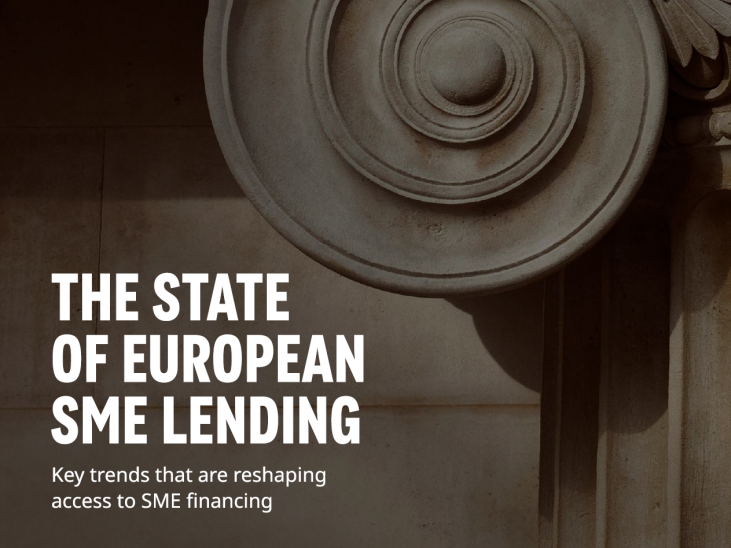3 reasons why banks need to understand the impact of the EU Digital Identity Wallet
3 reasons why banks need to understand the impact of the EU Digital Identity Wallet The 2022 edition of Euroforum’s annual conference on the future of payments was held in Amsterdam on 31 March. INNOPAY’s Vincent Jansen was one of the keynote speakers at the event. In his presentation called The ‘battle of the wallets’ reignited, he outlined how the upcoming EU Digital Identity Wallet regulation will not only create some challenges for the financial sector, but can also open up new opportunities. Here are his three reasons why banks need to start understanding the development of the EU Digital Identity Wallet and preparing for its impact.

|
What is eIDAS? eIDAS is the EU regulation on electronic identification and trust services which entered into force in 2014. It was created as a means to facilitate secure and seamless electronic transactions within the European Union. eIDAS is seen as a key enabler for the Digital Single Market in Europe to facilitate the flow of commerce. With the revision of eIDAS (eIDAS2), the EU aims to mitigate the risk of further market dominance of large online platforms, user lock-in and loss of control over data. The most significant change in the proposed eIDAS revision is the introduction of an Digital Identity Wallet, which must be made available for all EU citizens. |
Reason 1: The EU Digital Identity Wallet puts significant restrictions on digital identity and/or data custodian services
So far, eIDAS has not delivered the intended results, basically because there have not been enough digital identities, relying parties and (cross-border) usage. The eIDAS2 proposal introduces a EU Digital Identity Wallet, which makes the eIDAS regulation relevant for many different sectors – including the payments sector.
In eIDAS2, Member States will be mandated to provide citizens with a common EU Digital Identity Wallet. The wallet will be based on a harmonised/common user interface, built on consumer consent and maximum privacy, and open for various types of credentials/attributes, but it will allow freedom in terms of its set-up and implementation. Deadline for implementation could be somewhere in 2024. The timelines are very ambitious, but progress is advancing well. The introduction means that, in the future, digital identity in Europe will be organised by the EU Digital Identity Wallet.
Each member state has three options for offering the EU Digital Identity Wallet: 1) Government-operated, 2) Outsourced, and 3) Recognition of market solutions. This approach will likely result in a fragmented landscape, due to different national perspectives. And will significantly impact the EU landscape for digital identity and/ or data custodian services. Market players can still play a role in the digital identity landscape in countries with a recognition approach, but the terms and conditions of the recognition are determined by the member states. A toolbox, architecture and reference framework will provide a certain level of harmonisation and interoperability of wallets across member states, but will leave room for member state-specific choices and options.
Reason 2: The EU Digital Identity Wallet comes with mandated acceptance
During last year’s edition of Euroforum’s conference on the future of payments, INNOPAY introduced the concept of a bank as an identity & data provider: the Data Custodian. This approach enables banks to move towards a position as a trusted Data Custodian in the data economy, facilitating identity and data-sharing transactions, on top of their current role as trusted Money Custodian. The Data Custodian requires the key building blocks of digital identity, consent management and data exchange services.
With the introduction of eIDAS2, the EU Digital Identity Wallet will provide the digital identity building block needed by the Data Custodian. Moreover, the proposed eIDAS2 regulation states that, to stimulate adoption, sectors and platforms in the private domain (including the financial sector) will be mandated to accept the wallet for authentication. It is still unclear what ‘acceptance’ means in the context of banking & financial services. What will be the impact on Data Custodian-related bank propositions such as onboarding as a service or digital signing? Will the Data Custodian concept still be relevant when digital identity is taken care of by the EU Digital Identity Wallet?
Reason 3: The EU Digital Identity Wallet is not limited to identity
In view of the rise of digital assets and central bank digital currencies (CBDCs), a next step in the transition of banks could be the step towards an ‘Asset Custodian’. There could be a role for the bank app or crypto wallet to become a recognised EU Digital Identity Wallet. In this sense, the EU Digital Identity Wallet does not have to remain limited to identity, but could also include services related to data sharing, assets and CBDCs.
These three reasons make it clear that organisations in the financial sector need to start understanding the development of the EU Digital Identity Wallet and preparing for its impact, and not just because acceptance of the wallet will be mandated for banks. Even though the wallet puts significant restrictions on digital identity and/or data custodian services, it can also open up new opportunities for the financial sector – especially since the EU Digital Identity Wallet is not limited to identity.
INNOPAY can help you to prepare for the future impact of the EU Digital Identity Wallet. Reach out if you are interested in finding out how.
Watch the presentation as shown during the conference below.





